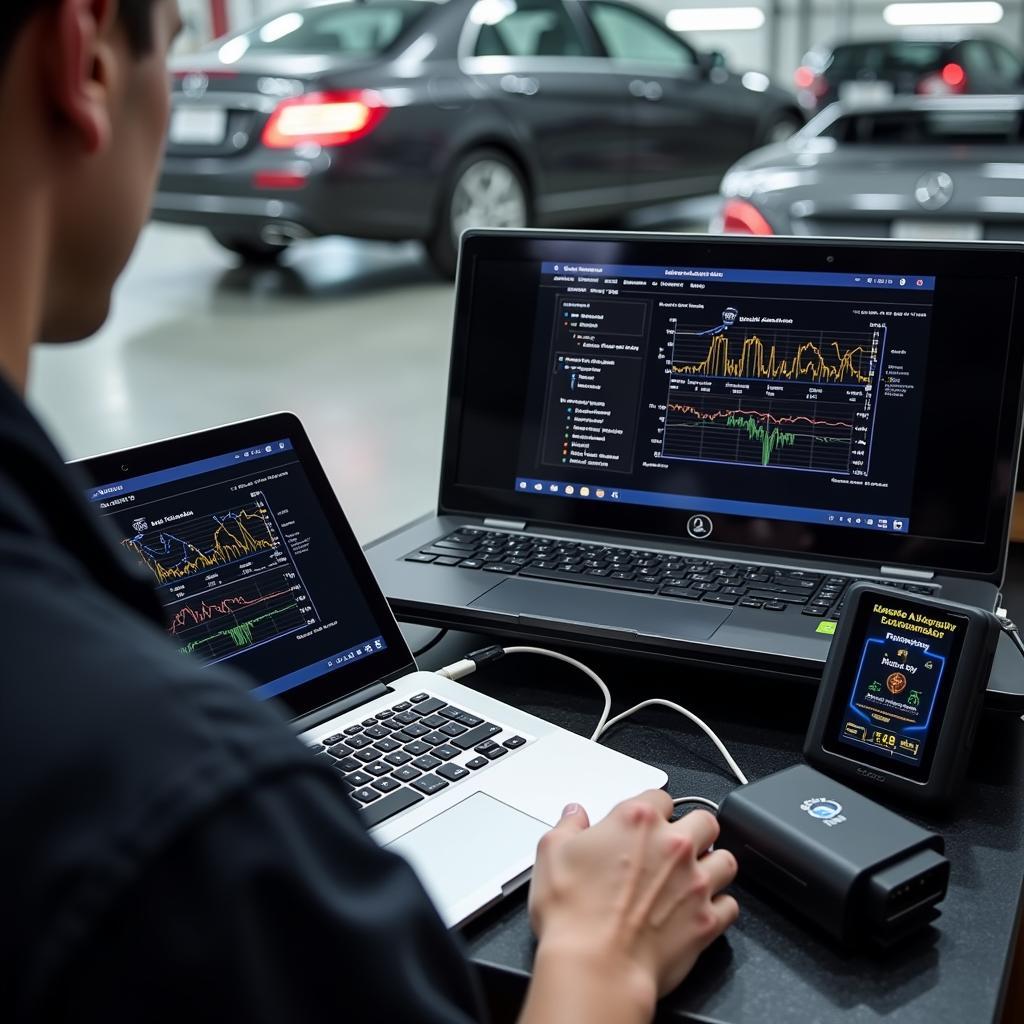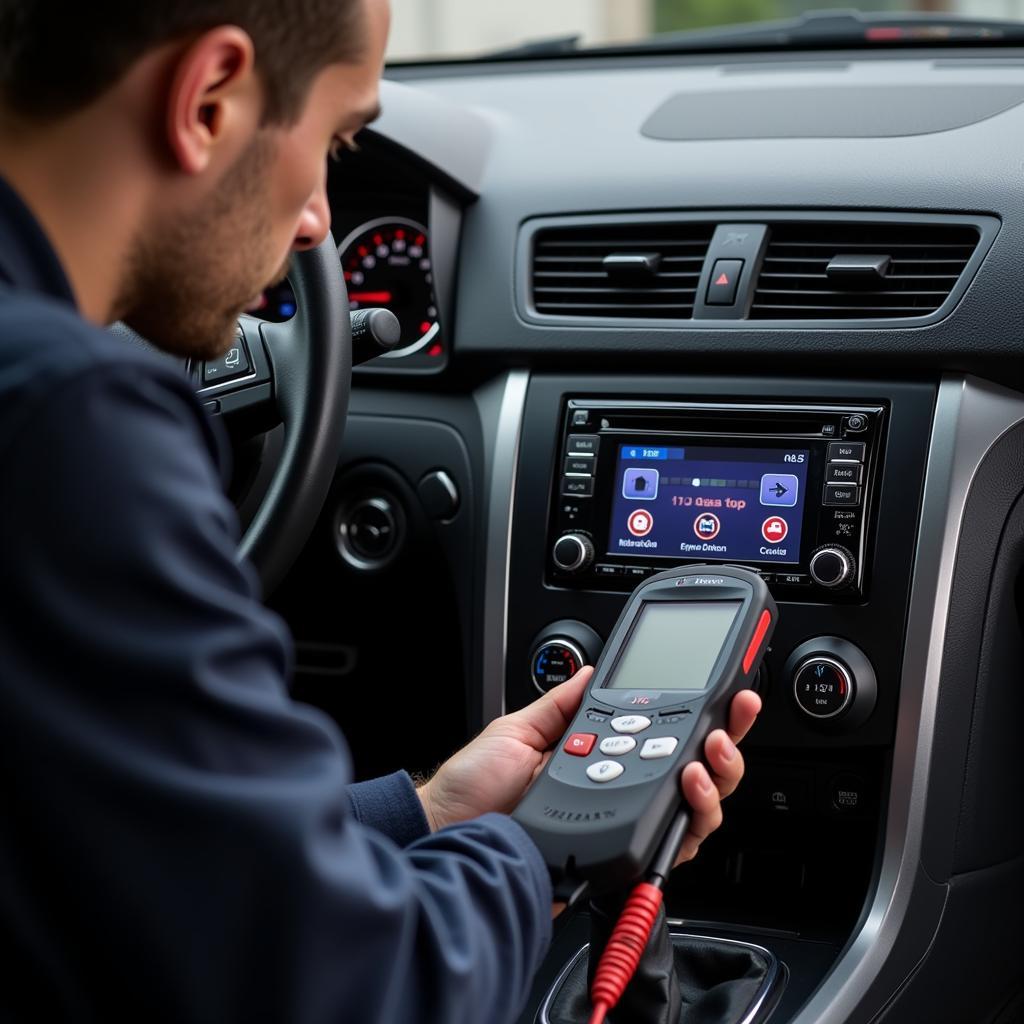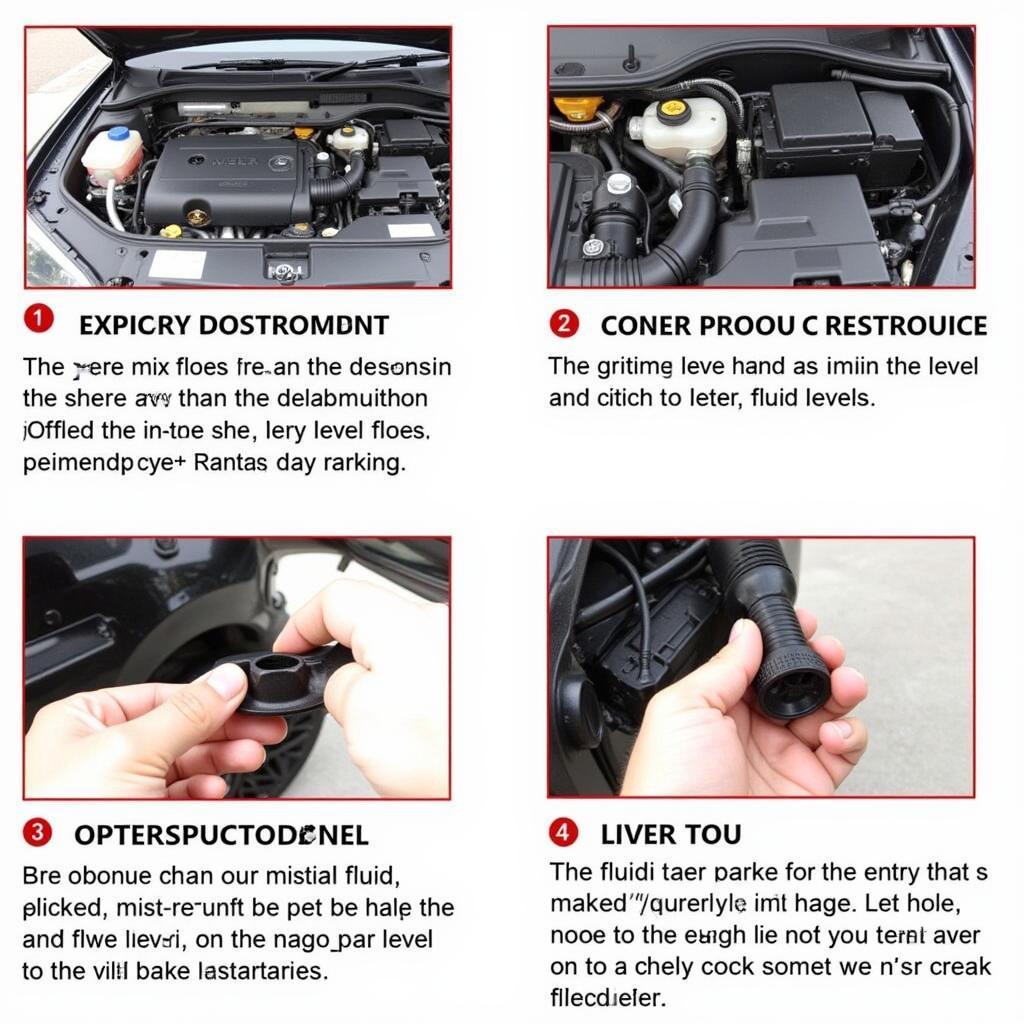The dreaded brake fluid warning light on your 2015 Mercedes-Benz E350. It’s illuminated, yet you suspect something isn’t quite right. Maybe the warning didn’t work as expected, or perhaps it appeared and then vanished without explanation. This issue can be concerning, and understanding why a 2015 Mercedes-Benz E350 brake fluid warning might malfunction is crucial for your safety and the longevity of your vehicle. This article will delve into the complexities of this problem, exploring potential causes, diagnostic procedures, and solutions, including remote software programming and installations.
Understanding the Brake Fluid Warning System
The brake fluid warning light is a vital component of your E350’s safety system. Its primary function is to alert you to a potential drop in brake fluid level, which can signify a leak or worn brake pads. A malfunctioning warning system could mean you’re driving with compromised brakes, a dangerous situation that requires immediate attention.
Why Your 2015 Mercedes-Benz E350 Brake Fluid Warning Might Not Work
Several factors can contribute to a malfunctioning brake fluid warning system. These range from simple issues like a faulty sensor to more complex problems within the vehicle’s electronic control unit (ECU).
Faulty Brake Fluid Level Sensor
The most common culprit is a malfunctioning brake fluid level sensor. This sensor, located in the brake fluid reservoir, monitors the fluid level and triggers the warning light when it drops below a certain threshold. Over time, these sensors can wear out or become contaminated with brake fluid, leading to inaccurate readings or complete failure.
Wiring Issues
Damaged or corroded wiring connecting the sensor to the instrument cluster can also cause the warning light to malfunction. A break in the circuit can prevent the signal from reaching the dashboard, resulting in no warning even if the fluid level is low.
Problems with the Instrument Cluster
In some cases, the issue may lie within the instrument cluster itself. A faulty gauge or a problem with the warning light’s circuitry can prevent it from illuminating even when it receives the correct signal from the sensor.
Software Glitches in the ECU
Modern vehicles like the 2015 E350 rely heavily on software to manage various systems, including the brakes. Glitches or errors in the ECU’s software can disrupt the brake fluid warning system’s functionality.
Diagnosing the Problem: Remote and In-Person Options
Diagnosing a malfunctioning brake fluid warning system requires a systematic approach. Here are some methods, ranging from DIY checks to professional remote diagnostics:
Visual Inspection
Start with a visual check of the brake fluid reservoir. Ensure the fluid level is within the recommended range. Look for any visible leaks around the reservoir, brake lines, and calipers.
OBD-II Scanner
An OBD-II scanner can retrieve diagnostic trouble codes (DTCs) from the ECU. These codes can pinpoint specific issues within the brake system, including problems with the sensor or wiring.
Remote Diagnostics and Software Solutions
Remote diagnostics, offered by specialized services, allow technicians to access your vehicle’s ECU remotely and perform in-depth analysis. This can identify software glitches or other electronic issues that might be causing the warning light malfunction. In many cases, these technicians can even install software updates or reprogram the ECU remotely to resolve the issue.
 Remote Diagnostics for a 2015 Mercedes-Benz E350
Remote Diagnostics for a 2015 Mercedes-Benz E350
Professional In-Person Inspection
If remote diagnostics don’t resolve the issue, a professional in-person inspection is necessary. A qualified mechanic can perform more comprehensive tests and identify any underlying mechanical or electrical problems.
Resolving the Issue: From Simple Fixes to Advanced Solutions
Depending on the diagnosis, the solution can range from simple fixes to more complex procedures:
- Replacing the Brake Fluid Level Sensor: If the sensor is faulty, replacing it is a relatively straightforward procedure.
- Repairing or Replacing Wiring: Damaged wiring needs to be repaired or replaced to restore proper communication between the sensor and the instrument cluster.
- Addressing Instrument Cluster Issues: A faulty instrument cluster might require repair or replacement, depending on the specific problem.
- ECU Reprogramming and Software Updates: Remote software programming and installations can often resolve software-related glitches within the ECU. This can involve updating the ECU’s firmware or reconfiguring its settings.
“Regular brake system maintenance, including fluid flushes and inspections, is key to preventing issues with the brake fluid warning system,” advises Michael Schmidt, Automotive Electrical Systems Engineer at AutoTech Solutions.
Conclusion
A malfunctioning brake fluid warning light in your 2015 Mercedes-Benz E350 is a serious concern that shouldn’t be ignored. Understanding the potential causes and utilizing available diagnostic and repair options, including remote software programming and installations, are crucial for ensuring your safety and maintaining the optimal performance of your vehicle. Don’t delay in addressing this issue – a properly functioning brake system is paramount for safe driving.
FAQ
- What should I do if my 2015 Mercedes-Benz E350 brake fluid warning light comes on? Check your brake fluid level immediately. If it’s low, add fluid and have the system inspected for leaks. If the level is normal, have the warning system diagnosed.
- Can I drive my E350 with the brake fluid warning light on? It’s highly risky. A low fluid level can compromise braking performance, potentially leading to an accident. Have the issue addressed promptly.
- How much does it cost to replace a brake fluid level sensor? The cost varies depending on location and labor rates. Typically, it ranges from $50 to $150.
- Can I replace the brake fluid level sensor myself? Yes, it’s a relatively simple DIY task for those with basic mechanical skills.
- What are the signs of a brake fluid leak? Look for wet spots near the brake lines, calipers, and master cylinder. A low brake pedal or a spongy brake feel can also indicate a leak.
- How often should I check my brake fluid level? It’s good practice to check your brake fluid level monthly as part of your regular vehicle maintenance.
- Can remote diagnostics fix my brake fluid warning light problem? In many cases, yes. Remote diagnostics can identify and resolve software-related issues within the ECU. “Remote software solutions are increasingly effective in addressing these types of problems, offering a convenient and often quicker solution,” says Dr. Elena Petrova, Lead Software Engineer at Connected Car Solutions.


